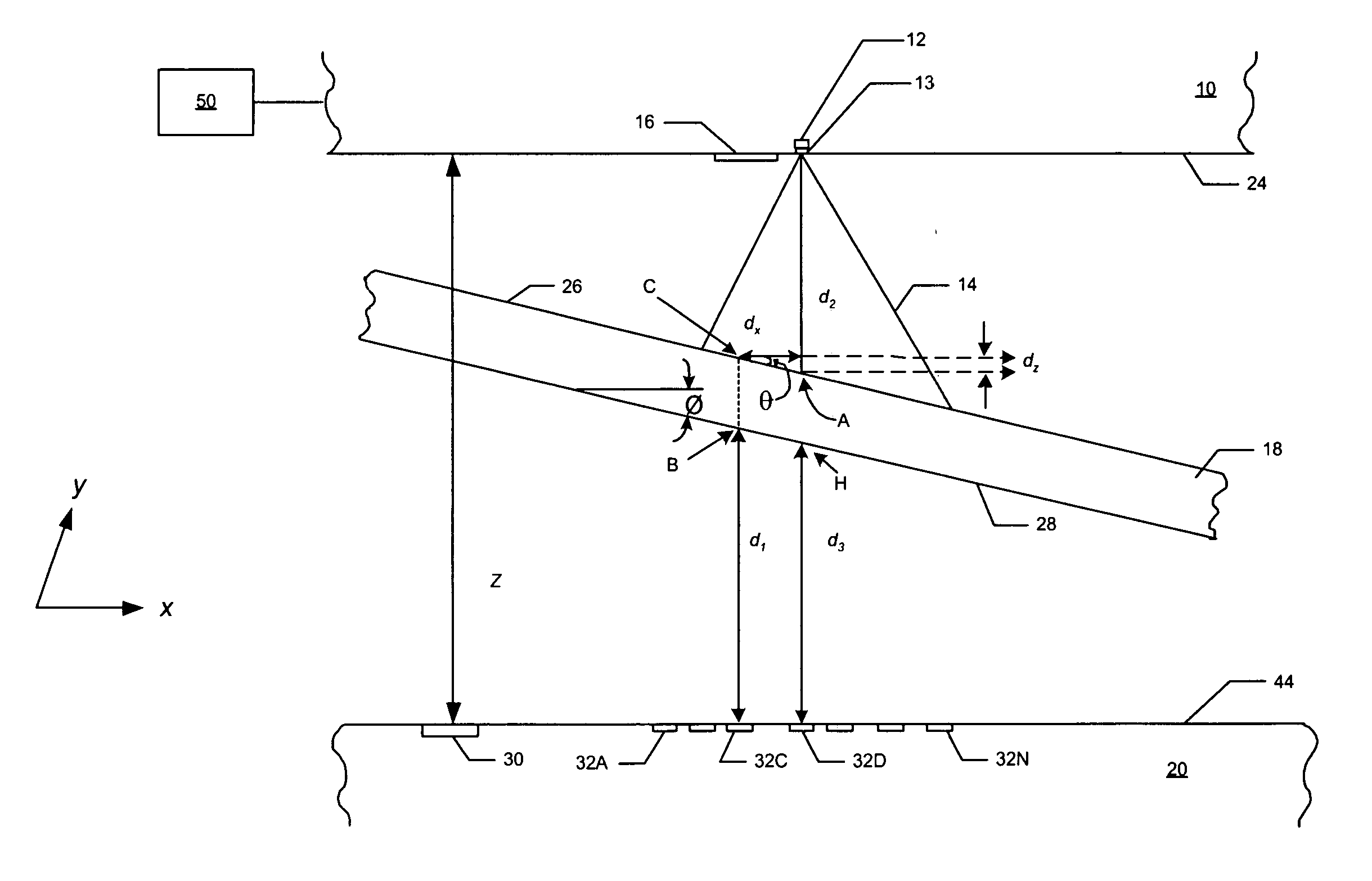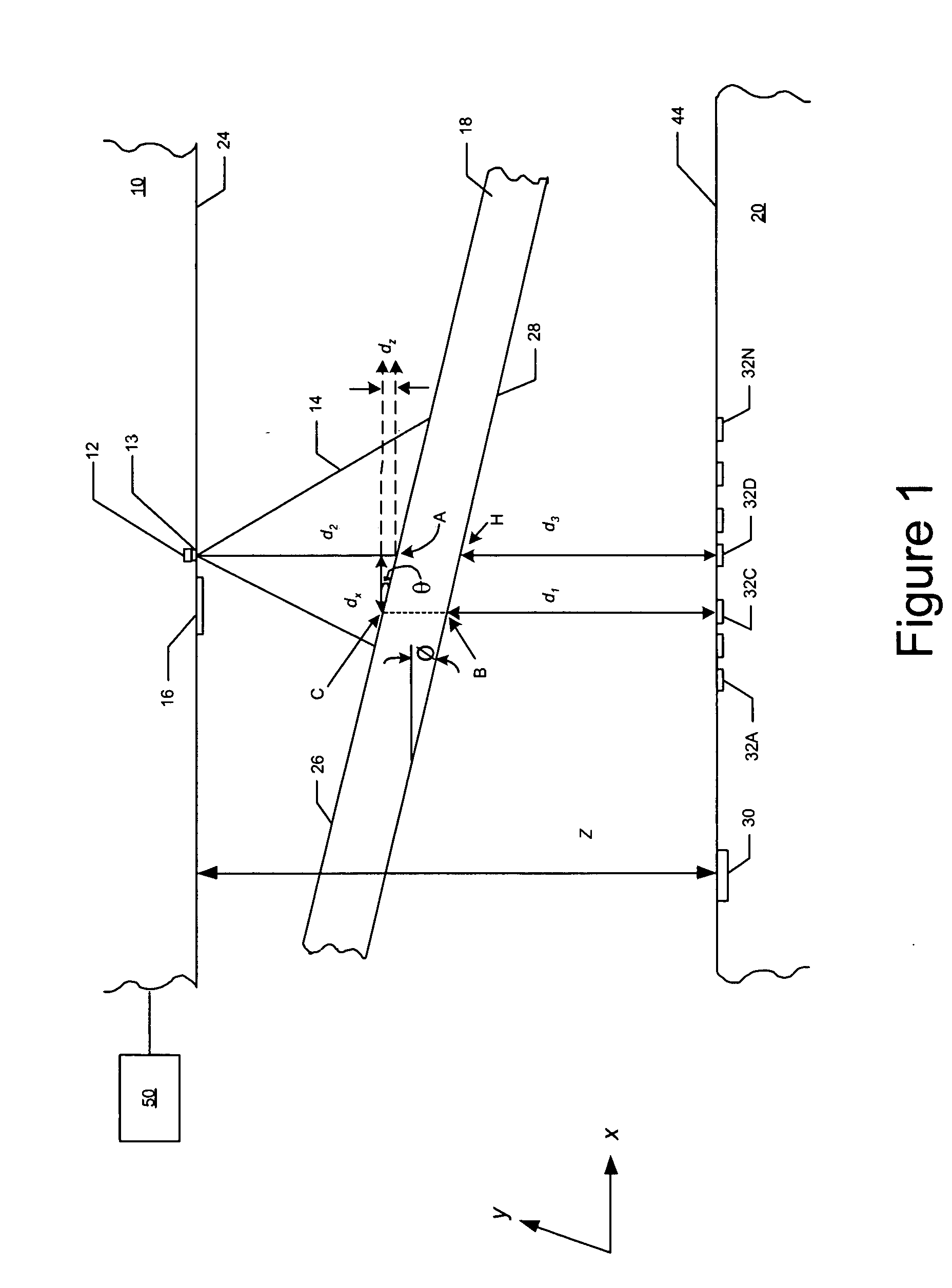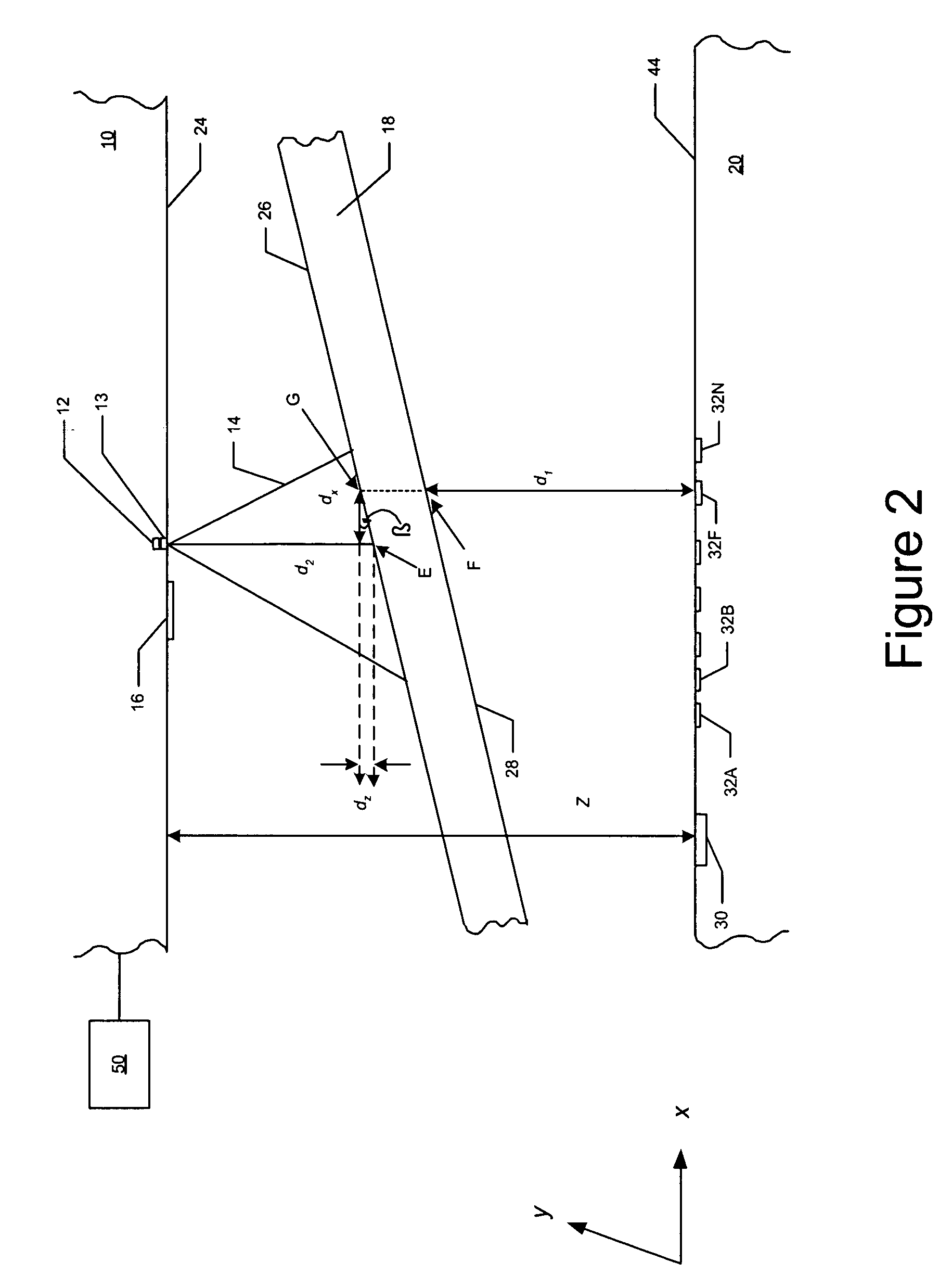Thin thickness measurement method and apparatus
- Summary
- Abstract
- Description
- Claims
- Application Information
AI Technical Summary
Benefits of technology
Problems solved by technology
Method used
Image
Examples
Embodiment Construction
[0029] As shown in FIG. 1, a non-contact web or sheet thickness measurement device of the present invention includes first and second enclosures or heads 10 and 20, respectively, which are vertically spaced apart. Surface 24 and surface 44 are preferably parallel to each other and are separated from each other by a distance that is denoted Z. Each sensor head includes various optical sensors for measuring selected dimensions as further described herein. A web 18 that is positioned between the sensor heads moves linearly in the direction of the y-axis. Due to the difficulty of mechanically constraining the moving web, the web 18 does not necessarily move along in a straight line that is parallel to the planar surfaces 24, 44. In this example, the web 18 is tilted; the angle between the upper or first surface 26 of the web 18 and the x-axis is denoted θ. Generally the top and bottom planar surfaces of the web are parallel to each other so that the angle θ made with the top surface is ...
PUM
 Login to View More
Login to View More Abstract
Description
Claims
Application Information
 Login to View More
Login to View More - R&D
- Intellectual Property
- Life Sciences
- Materials
- Tech Scout
- Unparalleled Data Quality
- Higher Quality Content
- 60% Fewer Hallucinations
Browse by: Latest US Patents, China's latest patents, Technical Efficacy Thesaurus, Application Domain, Technology Topic, Popular Technical Reports.
© 2025 PatSnap. All rights reserved.Legal|Privacy policy|Modern Slavery Act Transparency Statement|Sitemap|About US| Contact US: help@patsnap.com



